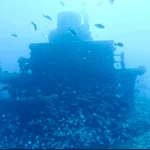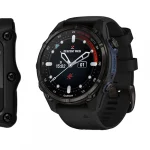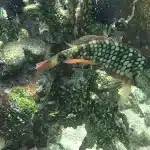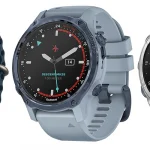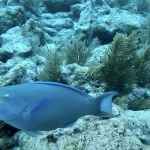The Science Behind Key Largo’s Water Clarity
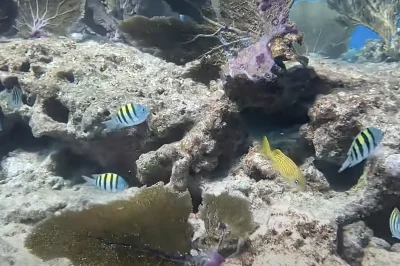
Table of Contents
- The Science Behind Key Largo’s Water Clarity
- Timing Your Dive: The Best Seasons for Visibility
- Wind and Water: How Weather Affects Visibility
- Navigating Marine Ecosystems for Clear Dives
- Top Dive Spots for Clear Waters in Key Largo
- Avoiding Common Mistakes: Achieving Optimal Clarity
- Locals’ Tips for Visibility: What Divers Should Know
- Future of Diving in Key Largo: Sustainability and Clarity
Introduction
Key Largo is a diver’s paradise, renowned for its crystal-clear waters that can offer visibility up to 100 feet during the summer. This blog post delves into the top three factors that contribute to these exceptional underwater conditions, helping scuba enthusiasts make the most of their dives. From understanding the natural features of the ecosystem to knowing when to dive, this guide provides everything needed for an unforgettable underwater experience.
The Science Behind Key Largo’s Water Clarity
Diving in Key Largo experiences seasonal variations in water clarity, although it generally maintains favourable conditions throughout the year. Visibility typically ranges between 50 to 100+ feet, with optimal periods during spring and early summer. Understanding these seasonal variations can significantly enhance a diver’s experience.
Seasonal Breakdown
| Season | Visibility | Key Factors |
|---|---|---|
| Spring (Mar–May) | 82+ feet (25+ m) | Calm seas, stable weather, minimal boat traffic. Ideal for photography. |
| Summer (Jun–Aug) | ~82 feet (25 m) | Warm waters but increased risk of afternoon storms and boat traffic. |
| Fall (Sep–Nov) | Variable | Potential storms early in fall; late fall offers clearer conditions. |
| Winter (Dec–Feb) | ~50 feet | Cooler temperatures, potential rough seas, but fewer divers. |
Additional Considerations
- Tidal Influence: Visibility often improves around low tide, especially in shallow areas.
- Storm Risks: Summer and early fall may see reduced clarity due to storms.
- Boat Traffic: Increased summer crowds can stir sediment, impacting visibility.
While spring offers the most consistent clarity, divers should always check local conditions before entering the water, as visibility can shift regardless of the season. This adaptability to conditions will ensure a more enjoyable diving experience.
Timing Your Dive: The Best Seasons for Visibility
Weather significantly impacts underwater visibility in Key Largo for scuba diving, with key factors including wind patterns, seasonal conditions, and storm events. Here’s a detailed breakdown:
Wind and Wave Effects
Strong winds create larger waves, which stir sediment and reduce visibility. For example, northerly or northeasterly winds can increase wave action and surface turbulence, while calmer conditions (common in winter) allow for clearer waters. Local reports track real-time wind speed, direction, and wave height from NOAA towers, providing critical data for divers.
- High winds (e.g., >10 knots): Increased wave swells lead to reduced visibility.
- Light winds: Calmer seas contribute to better visibility.
Seasonal Variations
Visibility fluctuates with seasonal weather patterns:
- Winter (December to February): Near-optimal clarity due to cooler, calmer waters, with visibility often exceeding 50 feet.
- Spring (March to April): As temperatures rise, visibility remains stable (often between 50 and 60 feet) despite occasional wind-driven swells.
- Summer (June to August): Warm waters (approaching 85°F) attract marine life, but visibility may decline due to storms or tropical disturbances.
- Hurricane Season (June to November): Storms can drastically lower visibility, although clear conditions often return during calm periods between weather events.
Critical Weather Events
- Hurricanes: These can temporarily destroy visibility by churning sediment and currents.
- Cold Fronts (Winter): Windy days typically precede clearer conditions.
- Summer Thunderstorms: Heavy rains can reduce visibility, though recovery is often rapid.
Monitoring Tools
Divers should rely on:
- NOAA Tower Data: Real-time wind, wave, and current reports from resources like Molasses Reef.
- Local Reports: Dive operators provide updates on conditions, including visibility fluctuations amid sea swells.
For optimal diving, winter and spring months typically offer the best balance of warmth and clarity, while summer divers must navigate unpredictable storms. Always check real-time forecasts and reef reports to ensure the best diving experience.
Wind and Water: How Weather Affects Visibility
Debunking Misconceptions About Seagrass and Water Visibility
Many divers mistakenly believe that seagrass beds hinder visibility during dives. In reality, seagrass plays a crucial role in enhancing water clarity in Key Largo by stabilizing sediments and filtering nutrients. Healthy seagrass beds are vital for maintaining clear diving conditions, particularly in popular dive sites.
Seagrass beds positively affect visibility through several mechanisms:
- Sediment Stabilization: Seagrass roots anchor sediments in place, preventing them from being disturbed by currents or wave action. This anchoring significantly reduces the amount of suspended particles in the water, thus maintaining clarity.
- Particle Filtration: The blades of seagrass trap particles in the water column as water flows through, further contributing to clearer conditions for divers.
However, the health of seagrass beds is under threat from various human activities that can directly impact water visibility:
- Propeller Scarring: Boat groundings and propeller strikes can create physical damage to seagrass, leading to sediment resuspension, which negatively impacts visibility. Over time, these scars can expand, worsening the situation.
- Habitat Loss: Dredging and coastal development destroy seagrass habitats, increasing sediment mobility and thereby reducing water clarity.
The ecological balance maintained by seagrass also plays a role in managing water visibility. For instance, healthy seagrass supports grazing species like sea urchins, which help control algae growth. When sea urchin populations decline, algal blooms can occur, further clouding the waters.
Divers can actively contribute to maintaining seagrass health and, consequently, water clarity. Here are a few proactive steps:
- Avoid Anchoring: Use designated mooring buoys to prevent damage to seagrass beds.
- Minimise Sediment Stirring: Maintain buoyancy and avoid touching the seafloor to protect fragile habitats.
- Participate in Conservation Efforts: Support local initiatives aimed at restoring and preserving seagrass habitats.
During peak diving seasons, particularly in late spring and early summer, divers can often enjoy optimal visibility of up to 60 feet, thanks in part to the healthy seagrass ecosystem.
Navigating Marine Ecosystems for Clear Dives
Typical Visibility Conditions
During summer (June to August), Key Largo’s average visibility ranges from 25 to 85 feet (7.6–26 metres), with occasional clarity exceeding 100 feet under optimal conditions. However, summer weather patterns introduce variability:
- Warm temperatures (84–86°F / 29–30°C) improve diver comfort but may also exacerbate algae growth or sedimentation during calmer periods.
- Thermoclines — layers of sudden temperature change — can briefly reduce visibility; however, they are less common in the shallower reefs.
Key Factors Influencing Summer Visibility
- Weather and Storms
Summer thunderstorms or heavy rainfall can temporarily reduce visibility by stirring up sediment, especially in nearshore areas.
- Shallow Reef Dynamics
- Depth and Sunlight: Shallow reefs (10–35 feet) greatly benefit from maximal light penetration, maintaining clarity even in moderate currents.
- Patch vs. Spur-and-Groove Reefs: Patch reefs closer to shore may suffer from lower visibility due to sediment accumulation compared to offshore spur-and-groove reefs, which usually have stronger currents to wash out debris.
- Boat Traffic
Increased tourist activity during summer can disturb sediment, particularly around popular dive spots like North Dry Rocks, though overall visibility often remains good.
- Tide and Current
- Optimal Times: Early morning dives often yield the clearest visibility before winds or boat traffic increase.
- Tidal Flows: Low tide may improve visibility in shallow areas by reducing the suspension of sediment.
Comparative Visibility by Site
| Site | Typical Visibility | Depth Range |
|---|---|---|
| North Dry Rocks | 25–35 feet (7.5–10.5m) | 10–15 feet |
| Offshore Bank Reefs | 50–100+ feet (15–30m) | 20–35 feet |
Summer visibility is generally sufficient for experiencing the diverse marine life, but divers should be prepared to adjust their plans based on current weather conditions and visibility factors.
Dive Computers
- Diving Computers for Female Divers
- Wreck Diving Computers
- Beginner Diving Computers
- Low-Light Diving Computers
- Technical Diving Computers
- Freediving Computers
- Underwater Photography Diving Computers
- Cold-Water Diving Computers
- Travel-Friendly Diving Computers
- Multi-sport Diving Computers
- Budget-Friendly Diving Computers
- Advanced Recreational Diving Computers
- Smartwatch-Compatible Diving Computers
- Child-Friendly Diving Computers
- Military or Professional Diving Computers
Top Dive Spots for Clear Waters in Key Largo
Diving Visibility Conditions in Key Largo Summer 2025
Key Largo’s diving conditions during summer 2025 are projected to align with typical peak-season patterns, offering excellent opportunities for underwater exploration.
Visibility and Water Conditions
- Peak Visibility: Summer months (May–September) historically deliver visibility exceeding 100 feet in the Florida Keys, driven by warm Gulf Stream currents that reduce sediment disturbance. Current reports for late May 2025 indicate good to very good visibility, with calm seas and moderate currents at popular sites like Molasses Reef and the USCG Duane Wreck.
- Water Temperature: Expect warm temperatures averaging 86°F, typical for summer in the Keys.
Marine Life and Dive Experiences
- Biodiversity: Summer divers often encounter sharks, turtles, and tropical fish, with high chances of spotting species like nurse sharks, Caribbean reef sharks, and hammerheads.
- Wreck and Reef Diving: Sites such as Molasses Reef, Spiegel Grove, and the Benwood Wreck are likely to remain accessible, with calm to moderate seas reported in late May.
Considerations for 2025
- Hurricane Season Overlap: While summer offers prime diving, trips from June to November require monitoring weather forecasts, as storms can impact conditions.
- Daylight Hours: Expect roughly 10.5 hours of daylight in late summer, slightly shorter than peak daylight hours.
Historical Context
In past summers (e.g., 2021), divers reported exceptional visibility (up to 120 feet at Permit Ledges) and notable sightings, such as bull sharks and vibrant marine ecosystems. These examples highlight Key Largo’s potential for unforgettable dives during warmer months.
Avoiding Common Mistakes: Achieving Optimal Clarity
Factors Influencing Water Visibility in Key Largo
When it comes to scuba diving in Key Largo, water visibility is a critical factor that can significantly enhance or detract from the diving experience. Understanding the elements that influence visibility can help divers plan their outings to maximise clarity and enjoyment.
Weather and Sea Conditions
One of the primary factors affecting water visibility is weather. Wind speed and direction can stir up sediments, making waters cloudy. Calm seas and stable weather, on the other hand, contribute to clearer conditions. Optimal visibility usually occurs when the wind is minimal, as this leads to less surface agitation and clearer water below the surface. Moreover, wave height plays a crucial role; calmer waters maintain lower sediment movement, which enhances visibility for divers.
Currents
The strength and direction of ocean currents can also severely influence visibility. Moderate currents can help in maintaining water clarity by moving suspended particles away from diving areas. However, stronger currents may carry sediments and plankton, reducing visibility significantly. Assessing current conditions prior to a dive can help divers choose locations with the best potential for clear sights.
Seasonal Variations
Visibility in Key Largo generally remains exceptional throughout the year, typically exceeding 60 feet and sometimes reaching up to 100 feet. Nonetheless, seasonal changes can introduce variables. For instance, algae blooms during warmer months may slightly diminish water clarity. Conversely, cooler months often bring better visibility as algal growth recedes, offering divers a clearer view of the stunning underwater landscapes.
Regional Conditions
Located close to shallow reefs and the Gulf Stream, Key Largo is naturally endowed with excellent visibility. However, localised events such as heavy rainfall or nearby construction can temporarily impact water clarity. It’s advisable for divers to check local conditions before heading out. For example, as of May 21, 2025, visibility at Molasses Reef was reported at 25 feet and described as “milky,” highlighting how environmental factors can create variations even in generally favourable conditions.
Locals’ Tips for Visibility: What Divers Should Know
Key Largo Diving Visibility in Summer Ocean Conditions
Summer diving in Key Largo (June–August) presents unique opportunities for scuba divers due to favourable water conditions and vibrant marine life. However, it also brings unpredictable weather that can affect visibility. The water temperatures typically rise to between 80°F and 85°F, which enhances biological activity but can introduce challenges such as storms and higher winds that can cause surface chop.
Environmental Factors Affecting Visibility
Despite potential surface conditions, underwater visibility remains notably good. Logs from captains indicate that visibility at depths can be described as “stellar” or “fantastic”, particularly around shallow reefs like Molasses Reef.
Key Influencers
- Wind and Waves: Summer winds can lead to choppy surface conditions (2–4 feet), but underwater clarity tends to remain high, especially at renowned dive sites, where conditions improve significantly below the surface.
- Water Temperature: During summer, water temperatures can peak at 84°F to 86°F, which supports vibrant ecosystems. However, these warm conditions can also raise the risk of storms that may briefly affect visibility.
- Marine Life Migration: Warmer waters attract various tropical species, enriching biodiversity around reefs. However, large schools of fish can disturb sediment, potentially affecting visibility momentarily.
Seasonal Considerations
Summer typically offers visibility ranges from 40 to over 100 feet, with most reef dives averaging clarity around 30 to 50 feet. While diving in winter can provide calmer conditions, summer’s warmer waters enhance opportunities for marine encounters.
Practical Advice for Summer Divers
- Reef Selection: Choose shallow coral reefs, particularly Molasses Reef, where visibility is commonly excellent despite surface conditions.
- Timing: Plan dives carefully, avoiding immediate trips after storms to prevent sediment from affecting underwater clarity.
In summary, while divers might experience some surface challenges in summer, Key Largo’s underwater visibility typically remains reliable, providing a rich diving experience full of warmth and marine life encounters.
Future of Diving in Key Largo: Sustainability and Clarity
Water Visibility Factors in Key Largo During Summer
Key Largo’s exceptional water visibility for scuba diving, particularly in summer, is influenced by several key factors:
Weather Conditions
Calm air and sea conditions are critical. Summer in the Florida Keys often features low wind speeds and minimal storms, which reduces wave action and sediment disturbance. Current reports from May 2025 describe “flat calm” conditions with visibility exceeding 100 feet, demonstrating how stable weather directly impacts clarity.
Water Currents
Minimal current flow is vital for preserving water clarity. Sites like Molasses Reef benefit from tiny currents that prevent sediment from becoming suspended, allowing visibility to exceed 100 feet. Conversely, stronger currents in other areas might impair visibility, emphasising the need for divers to select locations wisely.
Seasonal Patterns
While visibility is generally excellent year-round, summer (June–August) often aligns with optimal water temperatures around 80–85°F and increased marine life activity. However, visibility can still fluctuate due to unpredictable weather events, which may stir up sediments and reduce clarity.
Environmental Factors
Key Largo’s coral reefs benefit from being relatively remote from coastal runoff, which minimises sedimentation that clouds water quality. Conservation efforts, such as the establishment of Sanctuary Preservation Areas, protect habitats and maintain the overall health of the marine ecosystem.
Site-Specific Variability
Visibility can differ significantly between locations:
- Molasses Reef: This site is consistently reported to have visibility of over 100 feet during calm conditions.
- North Dry Rocks: Typically ranges between 25–35 feet of visibility, particularly in spring.
Divers should consistently monitor weather forecasts and prioritise guided trips to maximise their chances of encountering crystal-clear diving conditions during the summer months.
Sources
- Florida Scuba Diving – North Dry Rocks Diving Key Largo: Guide & Tips
- ScubaBoard – Best Time to Dive Key Largo
- Rainbow Reef – Key Largo Diving Weather Report
- Rainbow Reef – Key Largo Diving Weather Report
- Island Venture – Key Largo Weather Report
- Tides4Fishing – Ocean Reef Harbor Key Largo Visibility Forecast
- Key West Aquarium – Coral Reef and Seagrass Conservation
- NOAA – Seagrass in the Florida Keys

